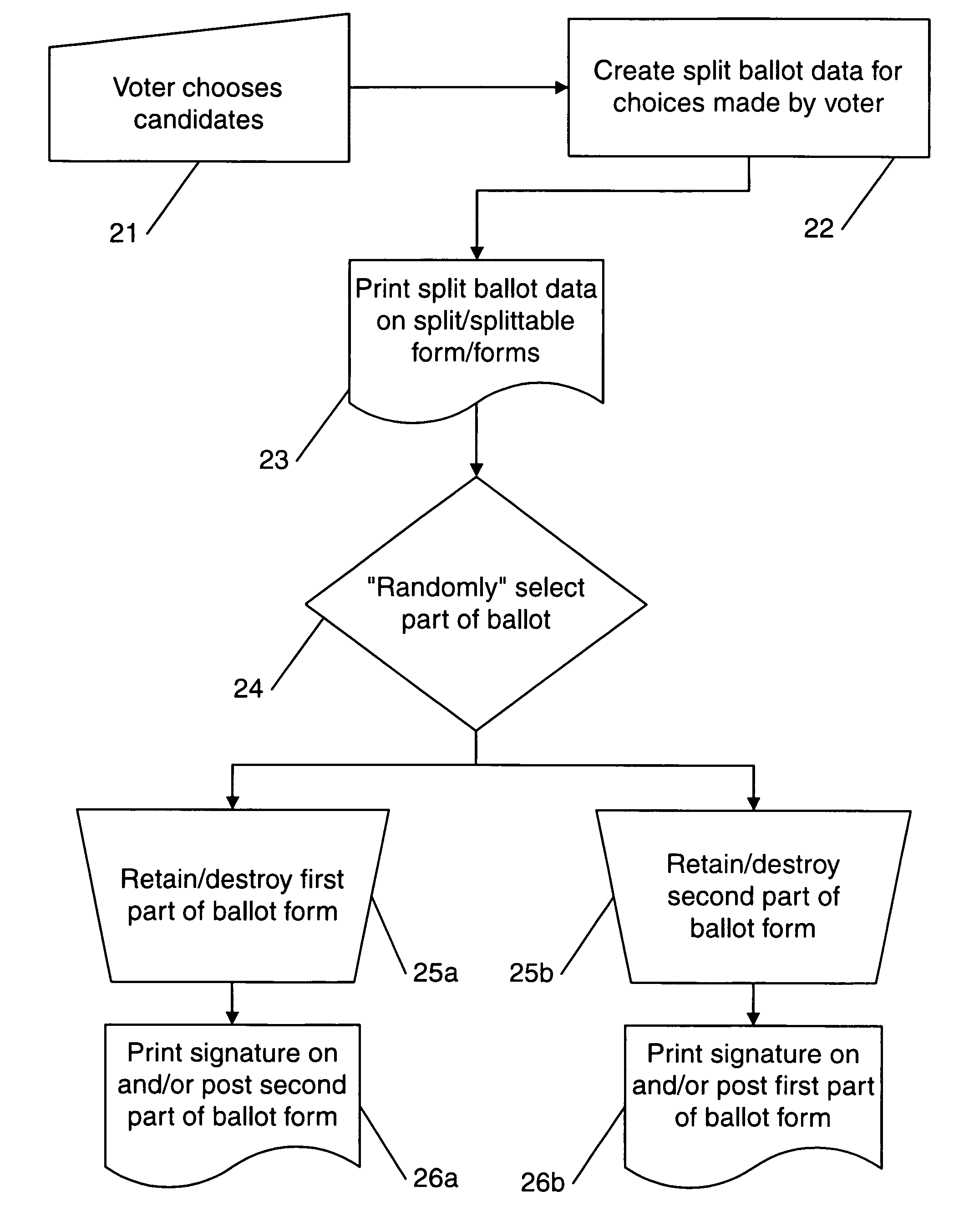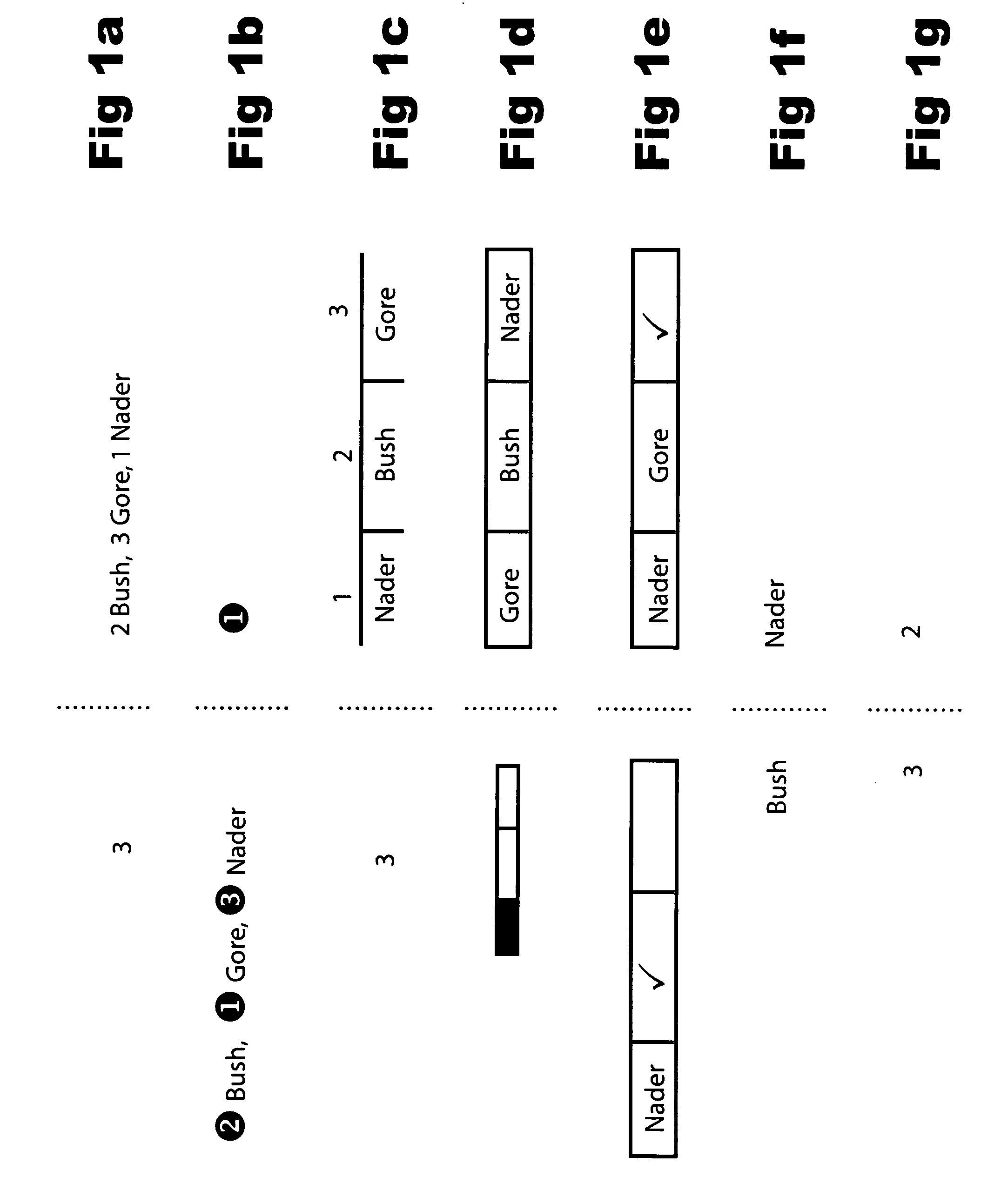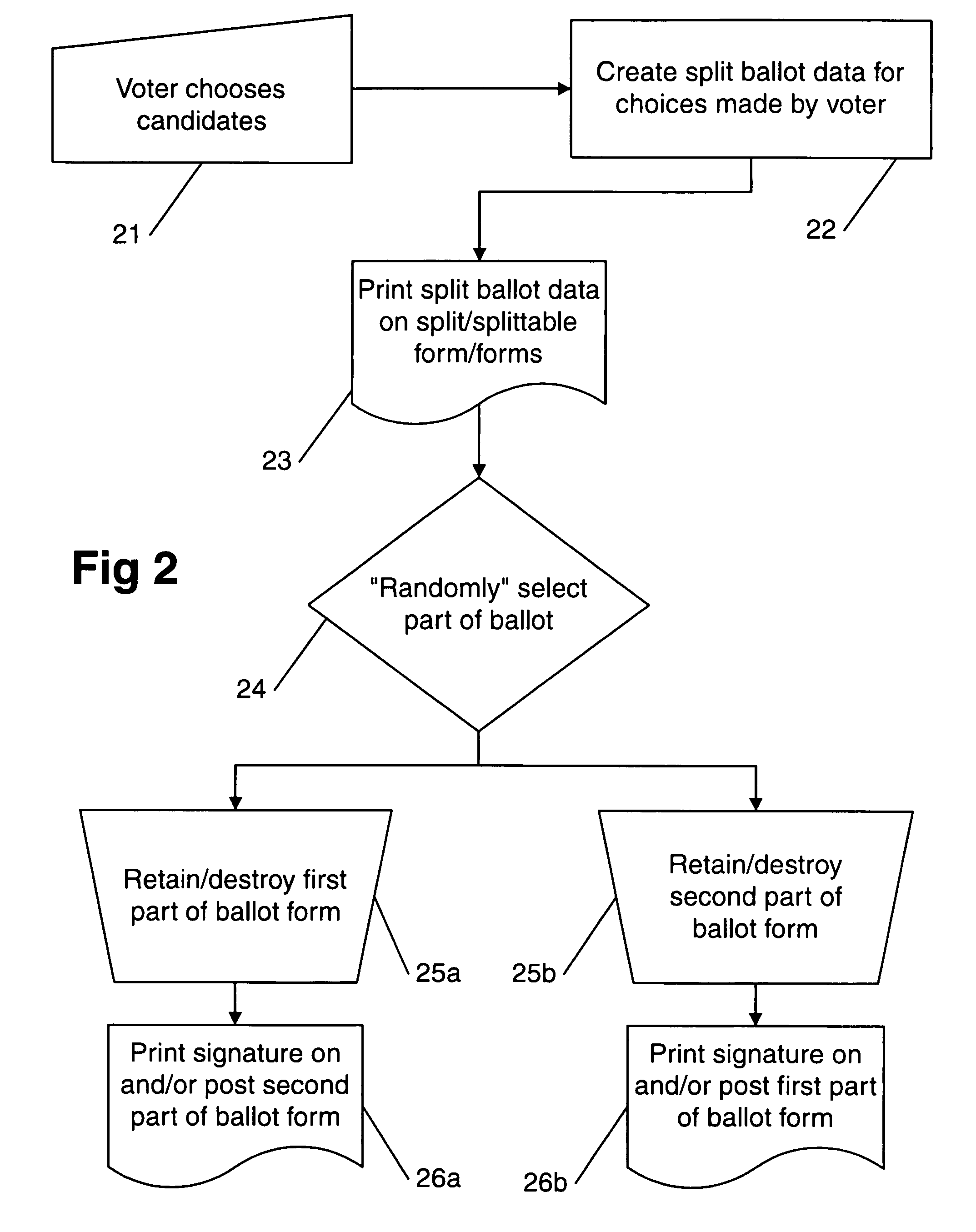Ballot integrity systems
a ballot integrity and ballot technology, applied in the field of election systems, can solve the problems of inability of those operating the system and supplying the forms to discriminate or track the ballot batches, introduce additional costs and errors in implementation, additional costs and/or undesirable in some settings, etc., to achieve strong integrity properties, reduce computation and data storage, and limit the ease of widely understood
- Summary
- Abstract
- Description
- Claims
- Application Information
AI Technical Summary
Benefits of technology
Problems solved by technology
Method used
Image
Examples
Embodiment Construction
[0209]Detailed descriptions are presented here sufficient to allow those of skill in the art to use the exemplary preferred embodiments of the inventive concepts.
[0210]The application titled “Physical and Digital Secret Ballot Systems,” PCT / US01 / 02883 filed 29 Jan. 2001, by the present applicant, is hereby included here in its entirety by reference.
[0211]Turning now to FIG. 1, seven example ways to split ballot information are shown. Each shows the two parts separated by a dotted line. It is believed that taken together the two parts determine the choice of candidate, but that either of them taken separately does not reveal anything about which candidate was chosen (as already described).
[0212]Referring to FIG. 1a, for instance, the value on the left is the label of the candidate in the list on the right. The list is in order, except that a random cyclic shift has been made in the ordering of the labels. Clearly “Bush” is the selected candidate, because the label on “Bush” matches t...
PUM
 Login to View More
Login to View More Abstract
Description
Claims
Application Information
 Login to View More
Login to View More - R&D
- Intellectual Property
- Life Sciences
- Materials
- Tech Scout
- Unparalleled Data Quality
- Higher Quality Content
- 60% Fewer Hallucinations
Browse by: Latest US Patents, China's latest patents, Technical Efficacy Thesaurus, Application Domain, Technology Topic, Popular Technical Reports.
© 2025 PatSnap. All rights reserved.Legal|Privacy policy|Modern Slavery Act Transparency Statement|Sitemap|About US| Contact US: help@patsnap.com



